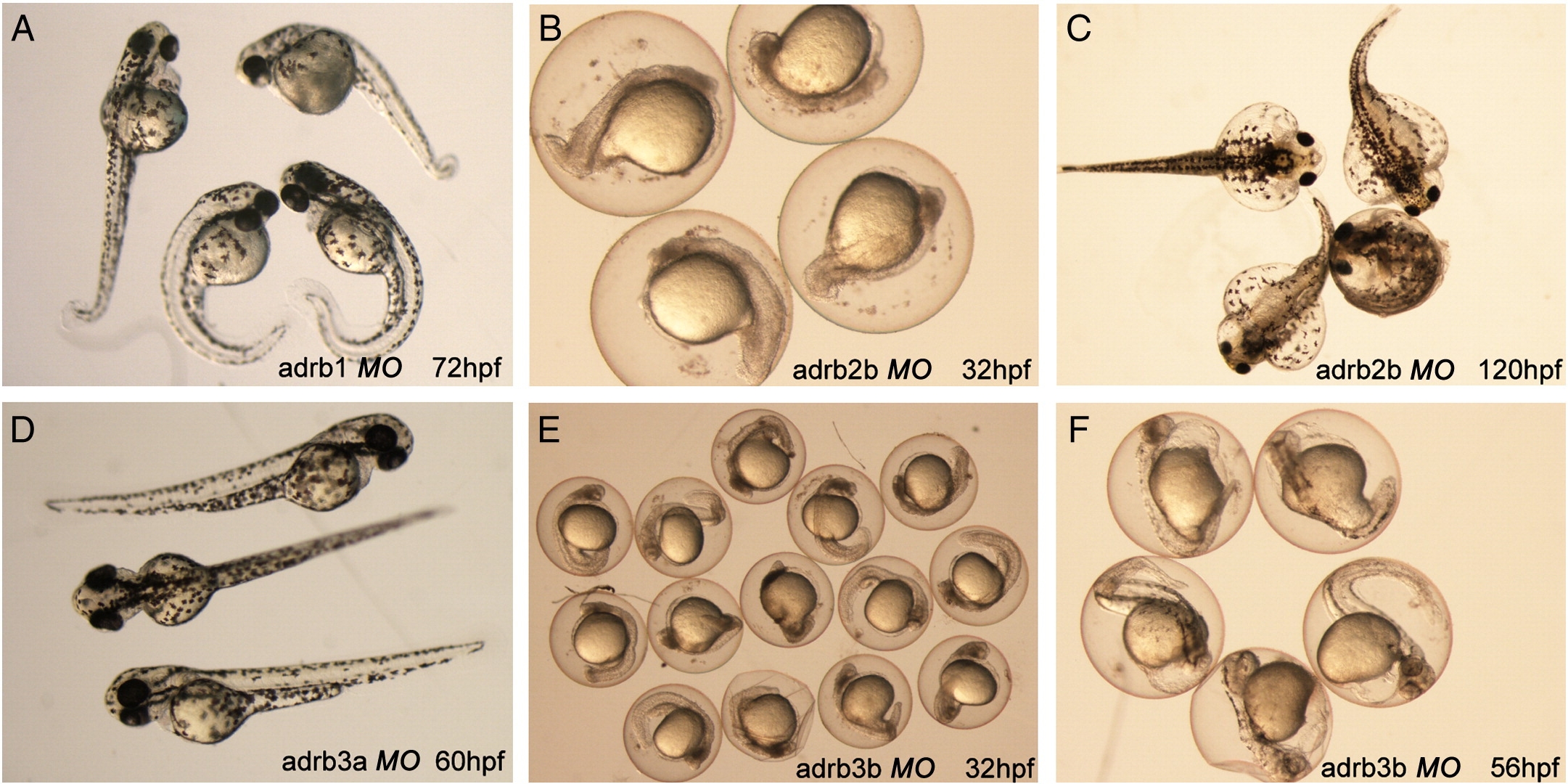Fig. S4 Zebrafish β-ARs loss of function experiments. 1?4-cell stage embryos were injected with 6.7 ng (for adrb1 and adrb3a) or 1.7 ng (for adrb2b and adrb3b) of MO. (A) Zebrafish treated with the MO against adrb1 showed curved bodies, larger yolks and early larval lethality. (B?C). Zebrafish adrb2b MO induced embryo malformation. (B) adrb2b MO-injected living embryos grown to 32 hpf are shown. Note the abnormal body shape and the small size of the head. (C) The same embryos in panel (B) developed severe edema at 120 hpf. (D) adrb3a MOs had no observable effect on developing zebrafish embryos. adrb3a MO-injected living embryos grown to 60 hpf are shown. (E?F) Zebrafish adrb3b MO induced embryo malformation and early larval lethality. (E) adrb3b MO-injected living embryos grown to 32 hpf are shown. Note the malformations of the cervical region and the head. (F) Five of 14 embryos shown in panel (E) survived to 56 hpf. Note the abnormal shape of body and head.
Reprinted from Gene, 446(1), Wang, Z., Nishimura, Y., Shimada, Y., Umemoto, N., Hirano, M., Zang, L., Oka, T., Sakamoto, C., Kuroyanagi, J., and Tanaka, T., Zebrafish beta-adrenergic receptor mRNA expression and control of pigmentation, 18-27, Copyright (2009) with permission from Elsevier. Full text @ Gene

